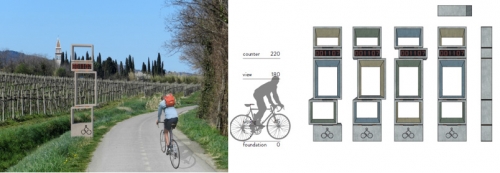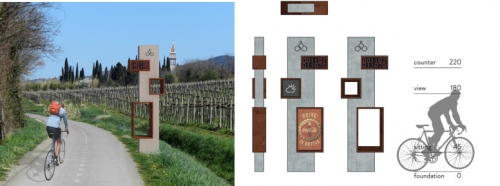- Home/
- In Focus/
- Transport – connect better to grow, and live and earn better?
Transport – connect better to grow, and live and earn better?
Smart Transport Development towards More Sustainable Mobility and Better Lifestyle
By Polonca Andrejčič Mušič
The South East Europe (SEE) 2020 Strategy[1] pursues a holistic model of development for the region and seeks to stimulate the key long-term drivers of growth such as innovation, skills, and integration of trade while encourage socioeconomic growth to improve the prosperity of all its citizens and to facilitate sustainable integrated multidisciplinary approach. Despite recession young people have more and more opportunities for success in life today than ever before (and this is true for SEE economies as well), but first they have to get rid of a fear of failure. By promoting entrepreneurship among youth, they have the opportunity to benefit from programmes within their specific interest groups. Therefore, three years ago Slovenia launched a new annual programme called ‘Creative Way to Practical Knowledge’ (PKP) to encourage students to start thinking about their career after their education.
In November 2014, the Human Resources and Scholarship Development Fund of the Republic of Slovenia announced on its website the second call[2] for proposals under the ‘Creative Way to Practical Knowledge’. The purpose of the call is to establish indirect partnerships between institutions of higher education and businesses in order to stimulate the use of innovative team-problem approach to solve practical problems while at the same time including students in the projects to support development of their competencies, skills and experiences with the help of mentors from educational programmes, i.e. a university teacher or assistant with a PhD, and from the related business field, i.e. an expert from the company or sole proprietor. In the context of project activities, which are complementary to the regular learning process, students develop creative thinking that will enable them to facilitate the transition from education to employment and consequently to live and earn more even beyond the borders of the country in which they were born.
In a holistic manner in line with SEE 2020 Strategy, our Slovenian pilot case is bringing together education, innovation, environmental protection, business development and job creation towards enabling better and healthier lifestyle and happiness. Therefore, the Human Resources Development and Scholarship Fund selected us as an innovative idea. The University of Ljubljana, in fact, the Faculty of Architecture[3] and the Faculty of Computer and Information Science[4], together with CISUM Consultancy Ltd.[5] and Harpoon Electronics Ltd.[6], signed an agreement to develop new smart bike traffic system management methodology and create innovative multifunctional bike counter.
The new approach seeks a system of criteria which enables integrated planning of cycling infrastructure at all spatial, organisational, sectoral, and professional levels. The new approach brings a different view on planning cycling infrastructure since, via new smart technologies; it includes humans and their experiences in the design of cycling infrastructure. Given that the complexity of human beings cannot be controlled only by one science or profession, solving the problem of bicycle traffic is no longer just a technical problem – its design and management lend a multidisciplinary character. In addition to being aware that strong cooperation between different professional disciplines, such as traffic engineering, urban planning, urban design and modern technology development is of vital importance for creating a well-functioning bicycle network, all activities must be conducted in a comprehensive and coordinated manner with active involvement of public, as the end user in the development process. Good cycling conditions must be adapted to humans as the most important criterion. In the context of project implementation, a new methodology was developed. All theoretical findings were tested and demonstrated on the pilot case of Parenzana cycling route in four Slovenian coastal municipalities, namely Koper, Izola, Piran and Ankaran, which is focused on renewing old once important but now abandoned railway line and transforming it into a national long-distance cycling route. Since it is a new element, which connects major towns and local cultural, natural and tourist attractions along the Slovenian costal urban landscape while enabling cross-border communication with neighbouring countries, it brings new life, new income potential for entrepreneurs and new green job opportunities all along the area. The most important is that new methodology is transferable to all other comparable areas in Slovenia, Europe, and the world at large.
During the project, we developed a new innovative pure Slovenian high-quality designed product. The new bike traffic multifunctional counter is adaptable to any environment in Slovenia and beyond. By linking physical and digital world, it brings EU regions together while helping create better cycling conditions for all types of users with no limits on age, gender or social groups. With the aim is to enable healthier environment and better lifestyle for people in Slovenia, and also in SEE and EU at large, the multidisciplinary approach breaks down all barriers between different professional disciplines.


Figure 1: Study of Multifunctional Cycling Communicator Design, source: Klara Prošek, Urban Architectural Workshop[7], April 2015


Figure 2: Study of Multifunctional Cycling Communicator Design, source: Martin Mušič, Urban ArchitecturalWorkshop7, April 2015
Conclusions:
The PKP project was an excellent opportunity for CISUM Consulting Company to launch a new programme, which deals with solving problems in transport sector, and thus encourage the design of more sustainable mobility culture, with emphasis on creating good conditions for bicycle traffic. The project also sets the basis for new development perspectives that enable better living conditions and new green job opportunities in the pilot area, and beyond, i.e. in SEE region. At the same time encouraging student’s talent under the expert guidance could be an opportunity for development of new innovative ideas as a contribution to the progress of overall business. It is important to teach future generations how to free themselves of theoretical framework and to prepare them to enter the labour market, i.e. to be ready for creative thinking and to become aware of self-capability. Throughout the project, they gained experience and learned about actual performances. All direct and indirect impacts of PKP project follow the main objectives of the SEE 2020 Strategy as its pillars strive to connect regions to increase sustainable, integrated and inclusive growth and its efficient management, while facilitating better living and earning in the region. The programme educates and encourages individuals who dare to develop their talent to become responsible and interested in helping shape our society. In the future the PKP programme could be a perfect model to replicate in all economies of SEE region and EU at large.
![]()
Polonca Andrejčič Mušič is a Traffic Engineering Expert dealing with projects related to different constructions and building of urban landscape environment and sustainable mobility. She has extensive experience as a Project Manager for Traffic Safety at the Slovenian Ministry of Transport, Directorate for Roads. Her speciality is sustainable mobility, in particular bicycle traffic design. She is the author of a number of national and international research documents, strategies and guidelines, and was a member of many different ministerial and expert working groups. Ms Andrejčič Mušič earned both her B.Sc. and M.Sc. degrees at the University of Ljubljana, Faculty for Civil Engineering, and since recently she has been working on her doctoral thesis research at the Faculty of Architecture.
[1] http://www.rcc.int/files/user/docs/reports/SEE2020-Strategy.pdf
[2]http://www.sklad-kadri.si/si/razvoj-kadrov/po-kreativni-poti-do-prakticnega-znanja/
[3]http://www.fa.uni-lj.si/default.asp?id=1721
[4]https://www.fri.uni-lj.si/
[5]http://www.cisum-cycling.com/
[6]http://www.harpoon.si/?lang=en
[7]Urban Architectural Workshop: “Network of Resting Pints for Cyclists as an Catalyst of Tourist Development Adriatic Coast – Slovenia”, 6.-10.April 2015, Coordinators and Tutors: Professor dr. Ilka Čerpes, Univerza v Ljubljani, Fakultetazaarhitekturo, Ljubljana Slovenia and visiting Professor dr. Christian Suau, University of Strathclyde, Department for Architecture, Glasgow, UK
Winner of the Round 7, Voice of the Region Competition
Hello Tuzla!
Essay by Rijalda Dizdarevic, 24 years, Buzim
The shiny morning promised a lovely and productive day. Everyone in the house was rushing around, getting dressed, trying to have some breakfast and hopefully leave the house. I was the only one still looking at a spot on the ceiling, thinking about a nice day to enjoy. After a few moments of meditation, the alarm went off and I jumped out of bed. My destination for the day was the city of Tuzla. The conference was to be held 12-15 October. Tuzla is situated in North-East Bosnia and Herzegovina, 275 km from the place where I leave, Buzim. Delighted, I asked for a round-trip ticket. The man wished me good and safe journey, advising me to buy some interesting reading as it will last ten hours. At first I was shocked to hear this and thought it was just a joke, but after he explained the whole thing, I decided to return the ticket. He said this was impossible as it was already processed by the system. I was furious. The people in the line behind me were now getting annoyed and I decided to start my ten-hour long adventure. The first part was the hardest. Coming to terms with the fact that you will be sitting on the bus for almost the entire day is not easy and you blame the government, ministries of communication and transport, politics, travel agencies, etc. and the quarrel goes on in your head while the engine runs freely. From time to time the bus would stop, picking up new passengers. It was now 12.30 p.m. and finally time for a break. The moment I stepped on the ground my legs felt a kind of total relaxation and the whole body liven up again. After half an hour we boarded our house on wheels again. My anger grew weaker by every kilometre. I enjoyed the beautiful landscapes, autumn leaf colours, people harvesting crops, sheep scattered all over the meadows like pearls. Meanwhile, I received many phone calls asking me whether I had arrived or how long the journey will last. After explaining it, they were all shocked. It was 6.30 in the afternoon. The city was coming into sight. The excitement grew. I was dazzled by sunlight but could still see faces that gave me a warm welcome. Bitterness passed into relaxation. Ten hours of travelling would bring me to a city in Europe, but they all laughed and said I was in Tuzla.
* This designation is without prejudice to positions on status, and is in line with UNSCR 1244 and the ICJ Opinion on the Kosovo declaration of independence

